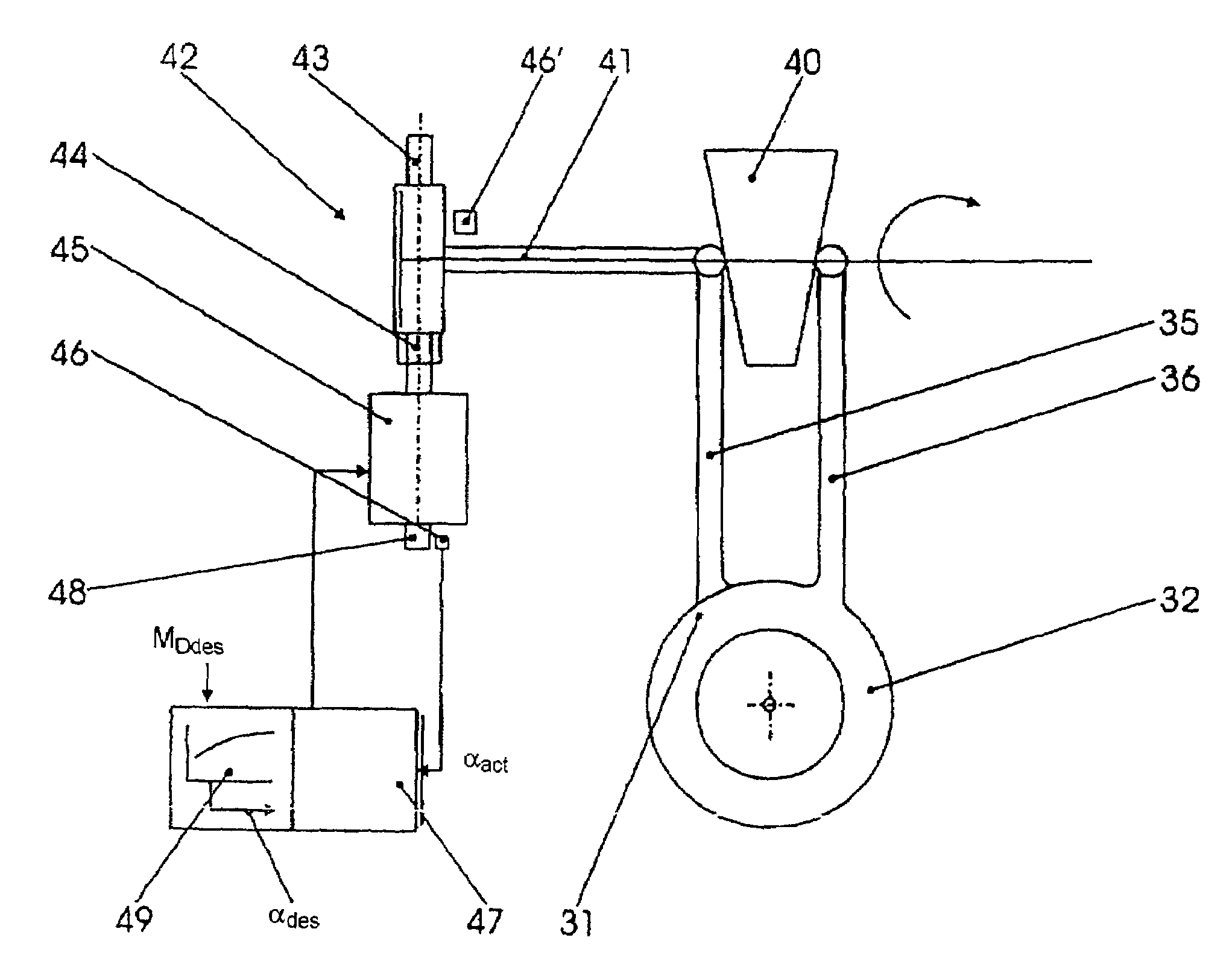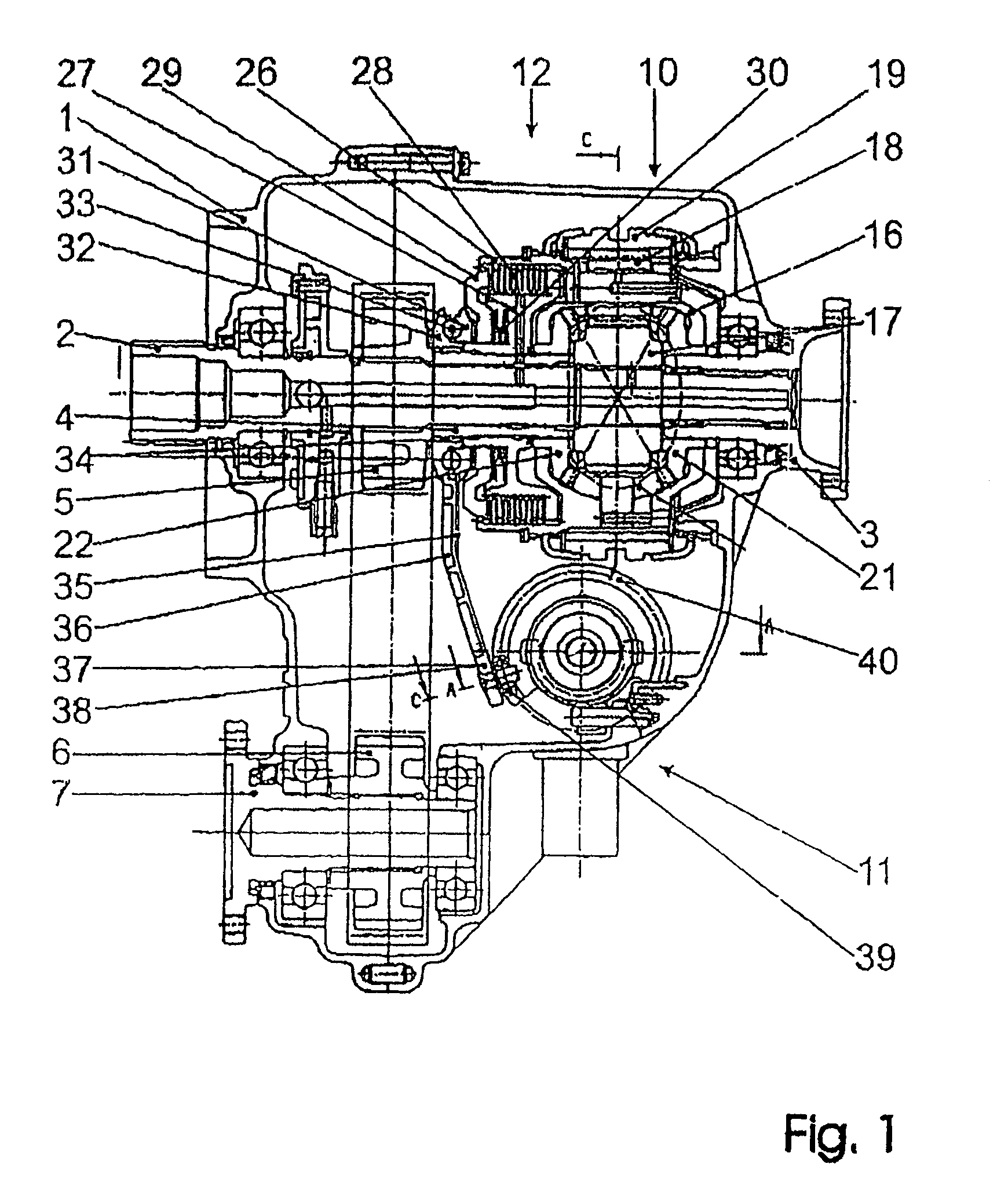Device and method for adjusting the torque transmitted by a friction clutch
a technology of friction clutch and torque transmission, which is applied in the direction of electric digital data processing, toothed gearings, instruments, etc., can solve the problems of affecting the torque transmission relationship between the torque of the electric motor and the torque transmitted, and affecting the accuracy of setting
- Summary
- Abstract
- Description
- Claims
- Application Information
AI Technical Summary
Benefits of technology
Problems solved by technology
Method used
Image
Examples
Embodiment Construction
[0041]In FIG. 1, the housing of a transfer gear is referred to overall by 1, an input shaft coming from the drive unit (not illustrated) of the vehicle by 2, a first output shaft drive-connected to the rear axle by 3, and a second output shaft drive-connected to the front axle (likewise not illustrated) by 4. The second output shaft 4 uses a first toothed chain wheel 5 to drive a second toothed chain wheel 6 below the input shaft 2, said second toothed chain wheel sitting on a driven shaft 7 for the drive of the front axle.
[0042]To distribute the torque to the two output shafts 3, 4, a differential gear referred to summarily by 10 is provided. Furthermore, a control unit 11 below the differential gear 10 and a locking clutch 12 for locking the differential gear 10 are provided. In the exemplary embodiment shown, the locking clutch is structurally combined with the differential gear 10. However, it could also be separate, even arranged elsewhere in the transfer gear or in the drive t...
PUM
 Login to View More
Login to View More Abstract
Description
Claims
Application Information
 Login to View More
Login to View More - R&D
- Intellectual Property
- Life Sciences
- Materials
- Tech Scout
- Unparalleled Data Quality
- Higher Quality Content
- 60% Fewer Hallucinations
Browse by: Latest US Patents, China's latest patents, Technical Efficacy Thesaurus, Application Domain, Technology Topic, Popular Technical Reports.
© 2025 PatSnap. All rights reserved.Legal|Privacy policy|Modern Slavery Act Transparency Statement|Sitemap|About US| Contact US: help@patsnap.com



